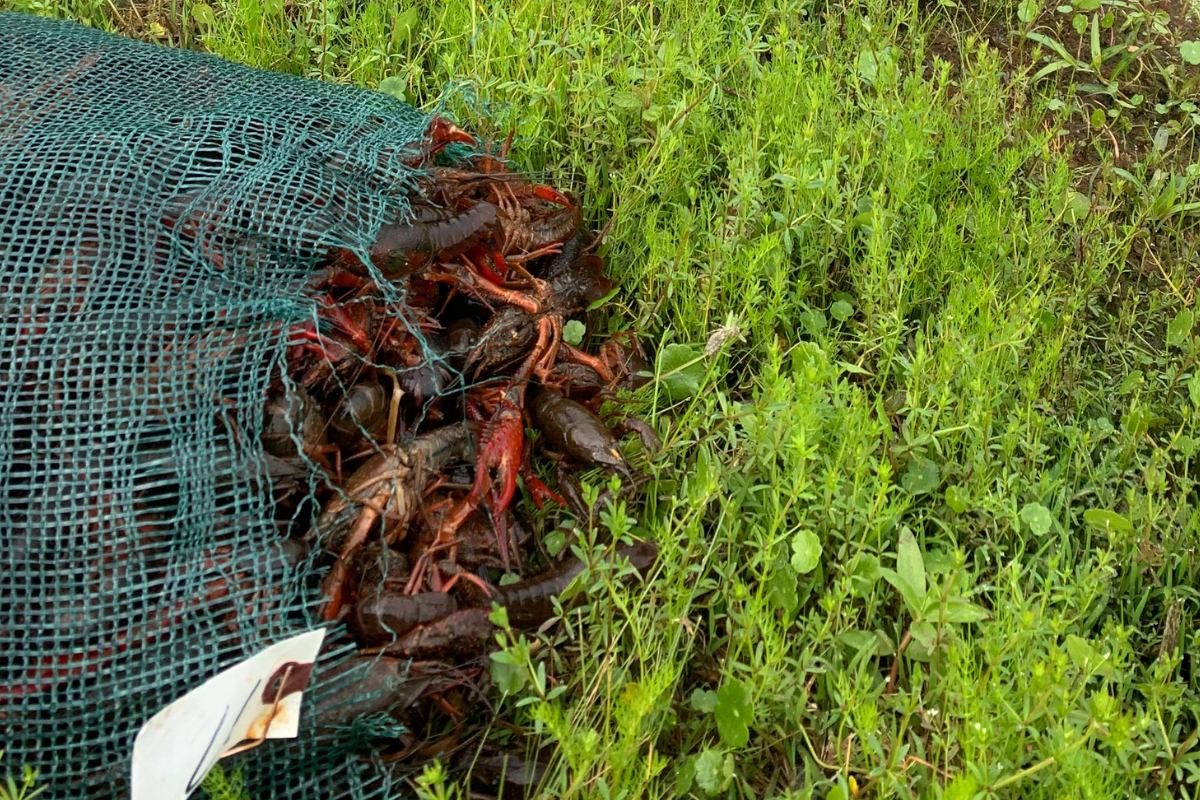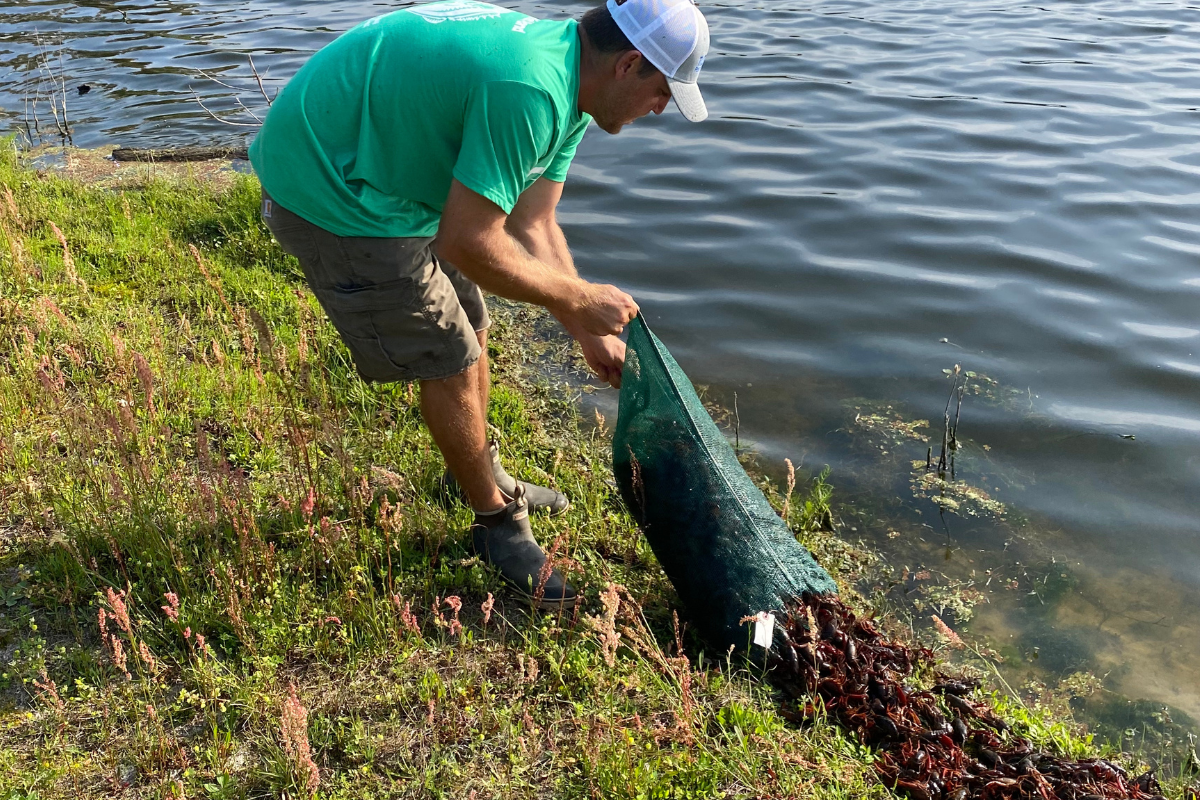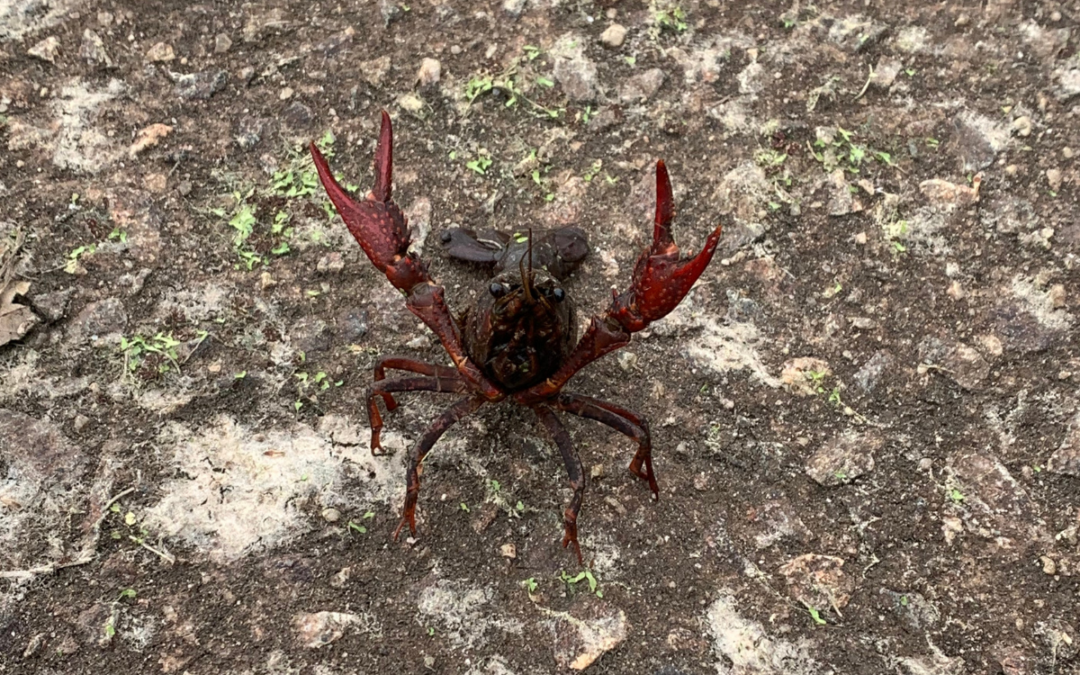If you’ve done much largemouth bass fishing, you’ve probably seen a crawfish in the mouth of a bass or in its gut while cleaning the fish. It’s no big secret that largemouth bass love to eat crawfish. Crawfish-based bass lures have become very popular over the last decade because they work.
So does this mean your pond could benefit from stocking crawfish? It’s very likely that it could! Below we’ll describe many benefits of stocking crawfish in your bass pond and discuss stocking strategies.
Crawfish Are Self-Sustaining
Crawfish may already be present in your pond at some level. But if you’re building a new pond or have never stocked crawfish, you should consider adding some. Once established, crawfish populations are relatively self-sustaining and typically won’t need to be restocked.
However, there are exceptions to this. If your pond has recently been renovated and the basin has seen a significant amount of disturbance, you may need to replenish the population. Also, restocking may be necessary in drought-stricken ponds that are frequently brought to low levels as a result of farmland irrigation.
But if the water levels in your pond remain relatively constant and there has been no recent renovation, a single crawfish stocking event should be enough. Crawfish will reproduce multiple times a year and females will usually produce 200-300 eggs per reproductive event. Parental care is high in crawfish, which results in a high offspring survival rate. This is why they usually don’t need to be restocked.

Benefits of Crawfish for Largemouth Bass
Crawfish are a great forage option for a largemouth bass pond for several reasons. Besides the fact that bass obviously love them, they’re usually pretty easy to find. We supply and stock crawfish for our customers in south Georgia and north Florida. If you’re not local to us, check with your local fish market to see if they’re able to get bulk shipments of live crawfish.
Stocking crawfish is relatively inexpensive compared to bluegill or other prey fish species. In addition to being inexpensive for the pond owner, they’re also an inexpensive food source for the largemouth bass. They’re much easier to capture than a bluegill, meaning the bass expends less energy acquiring food. The result is a net gain for the bass and a larger fish in your pond. When bass expend to much energy chasing and capturing prey, their growth rates can be slowed or stunted.
Crawfish are high in protein and provide significant nutritional value to largemouth bass populations. The result is that your bass will quickly start to gain weight and grow faster. Crawfish could be the difference in your bass growing 1 pound per year versus 2 or more pounds a year.
The immediate results provided by stocking crawfish is perfect for smaller ponds that can’t sustain large shad populations. Shad populations usually perform better in larger ponds where they have more room to disperse. In smaller ponds they usually get eaten too fast and the population doesn’t sustain itself. But crawfish can fill that gap that the shad can’t provide in smaller ponds!
Crawfish can also help to reduce the strain on your prey fish populations. If your bluegill or other prey fish populations have a heavy predation pressure, crawfish can help to satisfy the bass and relieve some of that pressure. The result is that your prey fish populations are given time to recover and start thriving again.

Strategies for Stocking Crawfish
Crawfish should ideally be stocked in the spring when they’re likely to reproduce after being introduced into their new home. Stocking density should be between 50-100 lbs per acre for smaller ponds with a surface area of just a few acres. But those pounds per acre numbers can be reduced for larger ponds or lakes.
When stocking crawfish, don’t just dump the bag into the pond. They will need some time to acclimate to their new surroundings and new water conditions. We suggest laying the bag(s) of crawfish near the edge of the water and pouring water over the top of the bag several times.
After this has been done, open the bag and slowly drag it along the bank as it empties. This will prevent the crawfish from fighting with one another and increasing mortality rates. It’s also a good idea to release them near an area of heavy cover so they have some initial protection against predators. There should be no need to manually put them in the water — they’ll find it!
Let Up Help Improve Your Pond!
If you’re in the south GA or north FL areas, we’ll be glad to help by stocking crawfish in your pond. Just complete this form and we’ll contact you to schedule a time to meet. We look forward to turning your pond into a productive fishery for years to come!

